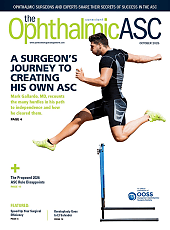Recently published trial results confirmed that the Scanly home OCT device (Notal Vision) performs comparably to in-office optical coherence tomography (OCT) in monitoring patients with neovascular age-related macular degeneration (AMD).

Figure 1. Side-by-side comparison of images taken with the Scanly home optical coherence tomography (OCT) device and an in-office OCT device demonstrate high concordance in detecting hyporeflective spaces, corresponding to fluid, in patients with neovascular age-related macular degeneration.
The study, published in Ophthalmology Science, enrolled 180 patients across 7 US retina practices and assessed the device’s diagnostic accuracy and patient usability over a 5-week period. Participants received the Scanly device by courier and were instructed to self-image daily without prior training. Comparative in-office OCT scans were used to evaluate agreement in detecting hyporeflective spaces, a marker of fluid (Figure 1). Scanly achieved a positive percent agreement of 86.6% and a negative percent agreement of 86.1%, meeting the study’s prespecified endpoint.
Usability was also high, with 96.1% of participants successfully completing self-imaging and requiring minimal phone support.
The results contributed to the US Food and Drug Administration's (FDA) first clearance of an AI-enabled home OCT device for ophthalmology. Scanly is part of a monitoring program supported by the Notal Vision Monitoring Center, which enables real-time imaging and alerts to aid treatment decisions. RP








